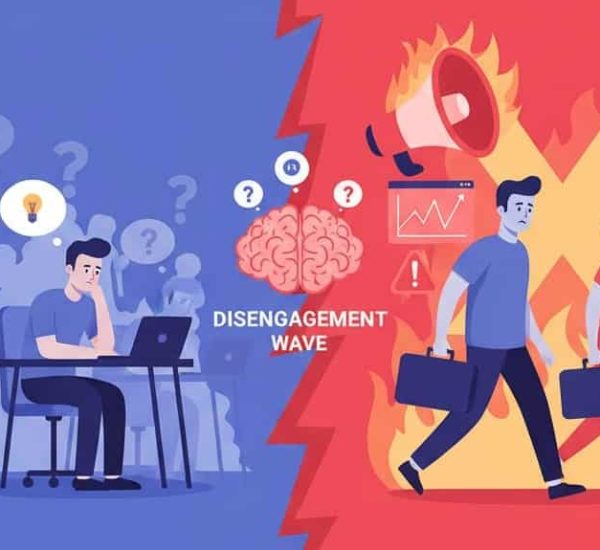Stack ranking, sometimes also known as forced ranking, truly is a diverse topic. Many people consider it a bad practice and destructive while most consider it a great approach to maintaining the top talent.
Jack Welch saw stack ranking as a way to galvanize employees and raise competition between them even more because only a few employees will be rated as either exemplary or meeting expectations.
Today, companies like Uber, Yahoo, Amazon, etc have discovered that the rank and yank approach does more harm than good in the company. A toxic work environment, stalled innovation, increased turnover are just some of the issues that come with stack ranking employees.
In this article, we discover what is stack ranking, see if it has any pros, an alternative to the approach, and its cons. Let’s unpack some definitions first.
What is Stack Ranking?
Pioneered in the 1980s by Jack Welch the CEO of General Electric, stack ranking is a type of talent management in which employees are rated on a curve and then classified as either exemplary, meeting expectations, need to be on a performance improvement plan, or straight away fired. This practice is a way of differentiating between the top-performing employees and the low-performing ones.
Welch also popularized the 15/75/10 curve for the top, middle, and bottom employees. This gives the employers means to differentiate and award the top-tier employees and weed out the employees with subpar performance.
The need to rack and stack employees arises when companies are looking for efficient and effective ways to have performance appraisals. The goal is to build an environment where all or most employees are high performers. However, stack ranking limits autonomy in the workplace and is accompanied by several other negative aspects.
Is there any Positive Side to Stack Ranking?
Before we dig into why stack ranking isn’t the best solution to evaluate performance lest see some pros of it.
Boost Employee Morale
Although ranking people can lead to negative feelings and loss of productivity in employees some may consider it an opportunity to better themselves. Ranking employees helps boost employee morale. The process of distinguishing and appreciating high performers makes it easier for organizations to draw out and follow through the necessary steps to retain them. On the other hand, low-performing employees may see their rank as a challenge and opportunity to improve themselves in order to rank better on the system.
Benefit for the Organization
One pro for the company of stack ranking is that it can help managers quickly identify patterns in performance and draw out their top talent. They can then use a similar pattern to train another employee in order to have more talent within the organization.
In addition, it also helps top-performing employees boost productivity while helping low-performing employees work on specific goals and areas to improve and develop, and then increase their performance levels.

Why Stack Ranking is Problematic?
A 2011 study by the Institute for Corporate Productivity (i4cp) revealed that the number of companies using forced ranking fell from 49% in 2009 to 14% in 2011. Today stack ranking for good reasons is becoming obsolete. Let’s see why:
It Hinders Innovation
Like many other companies, Microsoft too had been using stack ranking as a performance evaluation tool. But not a lot of time had passed it failed to compete with tech giants like Apple and Google as they paved the way to innovation. The reason? A series of astonishingly foolish management decisions as told by Kurt Earticle who wrote an article on how Microsoft lost a decade to stack ranking.
“If you were on a team of 10 people, you walked in the first day knowing that, no matter how good everyone was, two people were going to get a great review, seven were going to get mediocre reviews, and one was going to get a terrible review,” said a former software developer. “It leads to employees focusing on competing with each other rather than competing with other companies.” said a former Microsoft employee.
Leads to Increased Turnover
In the same article, a former Microsoft employee explains:
“Every current and former Microsoft employee I interviewed—every one—cited stack ranking as the most destructive process inside of Microsoft, something that drove out untold numbers of employees”.
Stack ranking is, therefore, a big reason for increased turnover which in turn s highly costly for the company. A report by SHRM tells us that the direct cost of replacing the employee who’s leaving is between 50-60% of their annual salary. It is especially high since the entire process includes onboarding training and developing the substitute employee.
Similarly, with a departing employee, some loss of tribal knowledge and institutional knowledge is inevitable.
Leads to a Toxic Work Environment
The need to rack and stack employees also lead to toxic work culture and that is highly unhealthy for any organization. One reason for this is that stack ranking creates competition between employees. When that happens, employees become distrustful of others, fear feedback from their managers, and dread performance reviews.
Trust between the workers is important if an organization wants to be on a path to success and high work productivity.
Triggers Fear and Shame in Employees
If a person sees themselves ranked below another person, they’re likely to feel ashamed and embarrassed. Stack ranking employees trigger this quality and therefore lead to negative tendencies. Not to forget how shame can trigger a person’s mental health leading to aggressiveness, lack of empathy, etc.
Loss of Teamwork and Dedication
Stack ranking makes employees feel they’re competing with each other. It creates an environment that encourages unproductive behavior and inappropriate behavior. In such an environment, teamwork is lost and innovation suffers.
Uber’s reputation was tarnished due to inappropriate use of personal data, sexual harassment, and inappropriate workplace behavior. Many people claim the cause was stack ranking and employee reviews because it created a culture that favors achieving revenue targets at any cost and doesn’t care about anything else.
Taking a Modern Approach Instead
Forced ranking became popular in the 1980s and 1990s. Many companies, such as GE, Ford, Microsoft, Texas Instruments, 3M, Goodyear, and Hewlett Packard used it. However, companies that use forced ranking soon realized stack ranking isn’t the best solution when it comes to evaluating employee performance. So how about taking a modern approach to managing performance instead?
With the changes happening in the world of work, most companies find the rank and yank system an obsolete way to manage employee performance. With the shift towards more knowledge-based work, companies are now realizing the need to give more autonomy and foster collaboration at the same time.
Companies that previously believed in the stack ranking employee performance evaluation system, have now turned to something more positive and healthy. Let’s see an example below:
Amazon Stack Ranking
One stack ranking example is Amazon the American multination technology company that used to stack rank its employees up until 2016 when it decided to drop the practice.
“We’re launching a new annual review process next year that is radically simplified and focuses on our employees’ strengths, not the absence of weaknesses,” the company confirmed in a statement to GeekWire.”
Now there are two lessons we get from this statement. First, it is the strengths of an employee that matter and the company should focus on, and second, finding weaknesses in an employee surely isn’t the best way to help them and the company grow.
Ever since the stack and rank system was introduced in the 1980s, the world has fairly changed today. Today companies that focus on their employee’s strengths, curating a positive culture, and helping employees become the better version of themselves each year are on top of their game.
Building a Positive Culture
Instead of finding out which employee has the worst performance, companies should focus more on building a positive culture where employees get to share their goals and help each other. Here are a few things to do:
Know What Your Employees Want
You should be aware of what your employees value and what kind of environment they are expecting from your company. Many people today prefer an environment that enables flexibility, autonomy, and a place where everyone works for shared goals. In order to avoid ranking the employees, you should also be mindful of what kind of people you want on your team.
Help Employees Speak Up
Employees like to work in an environment where they feel safe to share their idea,s opinions, and suggestions. You should encourage employees to speak up about every experience they go through and if they find something bothersome at the workplace. Managers need a system that encourages employees’ participation in setting shared goals and then working to meet them.

How to Stack Rank Employees
The next question is how to rank employees’ performance using the rank and yank system. Let’s see what you’ll need to rank your employees:
Your Employees Names
Begin with the names of employees that you want to rank.
Performance criteria
This is the criteria for which you will be ranking your employees. It can be their communication skills, their problem-solving skills, or their attendance.
A Scale of Measurement
This is the scale you’ll be scoring them against. It must be a numerical figure that you’ll use to rank the employees. For instance, an employee needs an 8+ score out of 10 in attendance to be an exemplary employee. You can score out of 10 or 100 it depends on you.
A Criteria Weight
In stack ranking, one criterion may be more important than others. For this part, think about the performance criteria and how they relate in importance. This will help you assign more weight to more important criteria.
Stack Ranking Template
A downloadable template of stack ranking is given here.
The Takeaway
Stack rankings come with issues and complexities, but they could still have a positive impact on your organization. That is only if it is conducted to encourage productivity and growth. What you need to do is keep a check on your employees, what they value and what they need in order to work to their full potential.
Lastly, by creating a work environment where feedback is considered a useful tool, you help employees in coming closer to their professional goals. That in turn provides the organization with the skills and people it needs for success.





